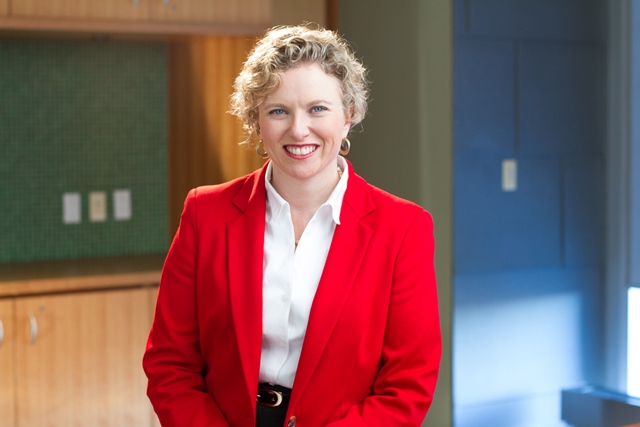By Julia Hanigsberg
The stereotype we are all familiar with is that hospitals are risk-averse and rigid. Indeed, when entrusted with individuals’ health and safety, our appetite for risk is low. Further, healthcare is one of the most complex systems in existence, more complex than banking, manufacturing, or education. Why? At least in part because the various combinations of care, activities, events, interactions and outcomes are virtually infinite (Braithwaite, J., BMJ (2018;361:k2014)).
So how do we get past our risk-averse tendencies and bring about change amid this complexity? A big part of the answer is embracing an innovative mindset. The challenge is how do we, as health care leaders, create an environment where the amazing ideas our staff, physicians, clients, and families have are harnessed into actions that make a positive impact and help us more effectively deploy our resources?
Since the launch of our No Boundaries strategic plan last year, Holland Bloorview Kids Rehabilitation Hospital has been fostering a culture of innovation and collaboration with renewed vigor. We are creating new opportunities for people and teams to mobilize around their ideas because we know that achieving the bold ambitions of our strategic plan will require everyone’s ingenuity.
One way we’re promoting creativity at all levels of the organization is through our No Boundaries Fund, funded by donor support. The No Boundaries Fund gives any member of our team the opportunity to apply for a small grant to address a need, provide a solution or leverage a potential opportunity aligned with our strategy.
Now in its second year, applicants are encouraged to partner with a client or family on an idea. With this model, projects are making a big impact at a low cost within a short timeframe. And our staff, clients and families are energized by the opportunity they have to turn their ideas into reality. So far we’ve launched a respite program, caregiver workshops, and a youth video feedback corner as a result.
Another way we’re making big changes in small timeframes is through a methodology called rapid redesign. We just completed the first phase of a rapid redesign in LIFEspan, a service that supports young people bridging from pediatric services at Holland Bloorview to adult services at the University Health Network’s Toronto Rehabilitation Institute.
The redesign involved introducing a new element to the LIFEspan service every week, evaluating how it went and deciding whether to keep it, tweak it or let it go. In the first phase LIFEspan has adopted four new best practices, including an option for clients to have remote appointments through a secure video conferencing platform. The redesign ensures the program more efficiently uses available resources while continuing to deliver a high degree of value.
Trying out new ideas is key to innovation but collaboration also plays a vital role, which is why we are adopting a design-thinking approach to drive initiatives forward. Design-thinking is a human-centred approach to idea creation that asks us to empathize deeply with our clients to develop a service that truly meets their needs.
We know young people with disabilities and their families experience a myriad of challenges when they shift from pediatric to adult care. As part of a design-thinking process, our transitions team hosted an “innovation jam” in April where 60 staff, clients, families and community partners came together to brainstorm and prototype ways to make the move to adult services smoother.
Now they are working with the Ministry of Health and Long-Term Care’s Business Innovation Office to launch these prototypes this fall so we can start making a difference in the lives of transition-aged youth as soon as possible.
What we’re learning from the design-thinking approach is that testing and improving on ideas is part of the process. A good idea doesn’t need to be perfect for us to get started. By removing perfection from the equation every individual has the freedom to be curious and do things differently, which is further embedding our culture of innovation.
Fostering innovation is also about removing unnecessary barriers, which is why we launched a permission-to-contact platform called connect2research in July. The idea for connect2research came from feedback we regularly heard from families, clinicians and researchers that the opportunities for families to learn about research study participation were limited and difficult to access. So, in partnership with clients and families, we co-designed a solution that leverages our health information system to ensure every client and family eligible for a research study is given the opportunity to participate. This high impact change greatly expands access to participate in the transformative research taking place every day in our Bloorview Research Institute.
Finally, under the leadership of our Board of Trustees and with our entire leadership team, we reviewed our risk appetite and developed a statement of risk appetite and tolerance reflecting selectively increased risk tolerance where appropriate and impactful, for example in research and in services for new patient populations. Next steps include rolling out that statement across the entire organization as a tool for operations managers and frontline clinicians.
By removing barriers and fostering an environment where the entire Holland Bloorview community feels empowered to explore their ideas together and then quickly transform them into reality we are truly evolving to a culture of innovation at Holland Bloorview. And not surprisingly, we see that the benefits far outweigh the risks.
Julia Hanigsberg is President and CEO, Holland Bloorview Kids Rehabilitation Hospital.


